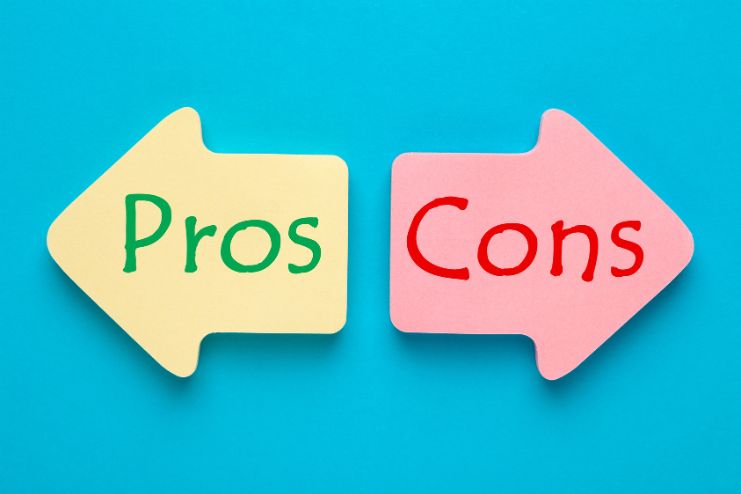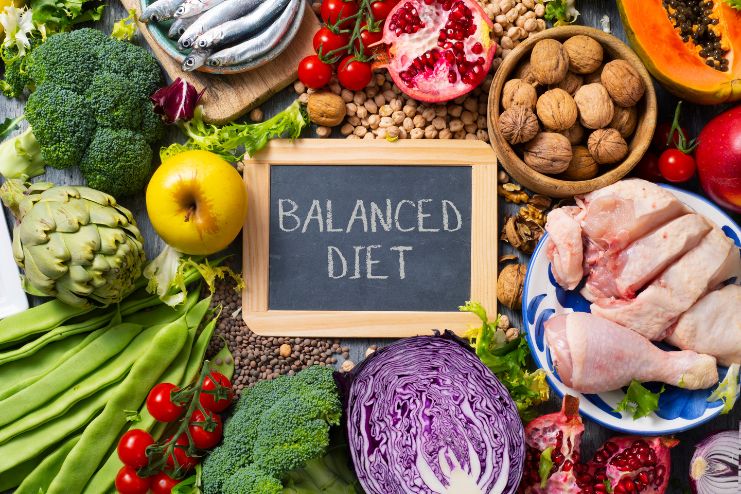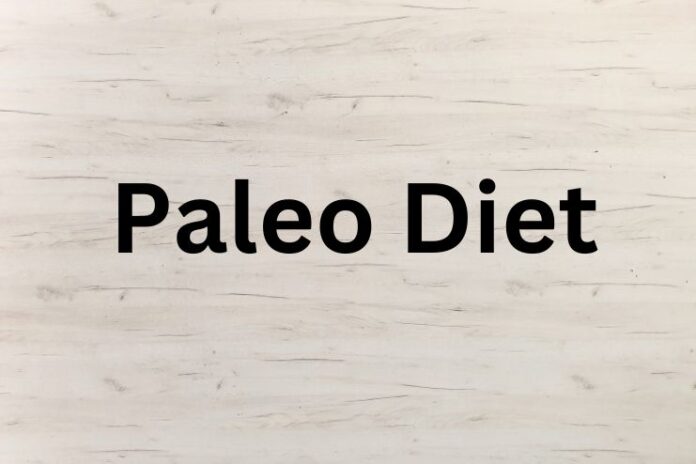Affiliate Disclaimer
Some links in this article are affiliate links. We may earn a small commission if you make a purchase through these links, at no extra cost to you. We only recommend products we find useful to our readersThe foundation of the Paleo diet, sometimes known as the “caveman diet,” is eating complete, unprocessed foods comparable to what our ancestors consumed in the Paleolithic period. This diet excludes processed foods, dairy, grains, and refined sugars in favor of lean meats, fish, fruits, vegetables, nuts, and seeds. Advocates think it can help with weight management, inflammation reduction, and overall wellness.
Like every nutritional strategy, the Paleo diet has benefits and drawbacks. Although it promotes eating complete, nutrient-dense foods, it can also be challenging to follow and restrictive.
The article will discuss the advantages and disadvantages of the Paleo diet and offer helpful advice to make the switch easier for newcomers. This article will give you the information you need to make wise dietary decisions, regardless of whether you want to try it or need advice on maintaining it.
Read More: Jicama Health Benefits – Why This Crunchy Superfood Deserves a Spot in Your Diet
Understanding the Paleo Diet
A paleo diet is based on what people consumed in the Paleolithic Era, which lasted approximately 2.5 million to 10,000 years ago.
According to the widely accepted Paleolithic diet, often known as the ” Pelo diet, ” eating like our ancestors aligns with our genetic makeup and promotes good health. Other names for it include the Stone Age, caveman, or steak and bacon diets. Meats, fish, and vegetables that may have been hunted, fished, or gathered in prehistoric times are the only foods a paleo dieter can eat.
Researchers believe our ancestors ate whole foods, even though it is impossible to pinpoint exactly what they consumed in different parts of the world.
The prevalence of lifestyle disorders such as obesity, diabetes, and heart disease was likely significantly lower among hunter-gatherers since they ate a diet high in nutritious foods and led active lives.
This diet may result in significant weight loss and health gains without monitoring calories.
According to the argument, the agricultural revolution is to blame for the increase in chronic illnesses in contemporary society. It implies that including grains, legumes, and dairy in meals may increase the risk of developing several chronic diseases, including allergies and obesity.
Pros of the Paleo Diet

The focus on complete, nutrient-dense foods, which can provide several health advantages, has contributed to the popularity of the Paleo diet. Here are a few main benefits:
- Eating many fruits and vegetables raises potassium levels, crucial for maintaining normal blood pressure and kidney and muscle function.
- The paleo diet naturally lowers calorie intake while increasing protein intake by avoiding processed meals, refined carbohydrates, and harmful fats. Protein prolongs feelings of fullness and decreases cravings by promoting satiety.
- Eating what your body needs will significantly reduce your hunger signals. This accomplishes this by lowering insulin fluctuations and enhancing glycemic control, which is advantageous for people with diabetes. Simple sugars increase hunger signals, which creates a vicious loop despite their high-calorie content. By following a paleo diet, you will acquire the nutrients your body needs while consuming fewer calories overall.
- Fats are beneficial to your health. Consuming modest amounts of unsaturated fats, such as those in avocado, almonds, and olive oil, results in a healthy lipid profile.
- High protein content: Proteins help skin, muscles, bones, and cartilage grow and develop. Eating enough lean protein can also help maintain a healthy body composition and reduce the insulin response.
Read More: The Potato Diet: Can Eating Only Potatoes Help You Lose Weight?
Cons of the Paleo Diet

Although the Paleo diet has many health advantages, some people may find it challenging to stick to it over the long term due to its possible disadvantages. The following are some significant issues:
- Eliminating entire food groups may remove vital vitamins and nutrients from the diet.
- Most athletes require 3–6 grams of carbohydrates per pound of body weight each day. Using only fruits and veggies would make this extremely difficult.
- Meal planning is more challenging if you rely primarily on fresh items, as fresh meats, fish, and produce are typically more expensive than processed ones like frozen or canned.
- Those who follow the paleo diet risk consuming insufficient calcium, which can lead to low bone and dental density. In the West, people typically get their calcium from milk, cheese, and yogurt.
- The diet does not permit legumes; they are high in magnesium, selenium, and manganese and very good for gut health.
Practical Tips for Beginners
Making the switch to the Paleo diet may seem overwhelming at first, but with the correct strategy, it can become a fun and sustainable way of life. These valuable pointers will help newcomers ease into the Paleo diet.
Start by progressively eliminating processed foods, refined sugars, and wheat from your diet rather than making big changes all at once. Increase your intake of whole foods, such as veggies, lean meats, and healthy fats. This gradual change makes the move easier to handle and aids in your body’s adjustment.
Planning your meals is essential to following the Paleo diet. Arrange breakfast, lunch, dinner, and snacks for the coming week. When hunger strikes, this lessens the urge to seek non-Paleo foods.
When you’re supermarket shopping, pay attention to fresh, whole foods. Stay near the store’s perimeter, which is usually where fresh produce, meats, and seafood are found. When feasible, look for wild-caught, organic, and grass-fed options.
Trying out new recipes might add excitement to the change. Look for Paleo-friendly alternatives to your favorite foods, such as zucchini noodles instead of spaghetti or cauliflower rice instead of conventional rice.
Read More: The Coffee Loophole Diet: Can You Really Lose Weight Without Giving Up Your Favorite Brew?
Emphasizing Nutrient Balance

Even though the Paleo diet promotes eating complete, unadulterated foods, maintaining nutrient balance is crucial to preventing deficits. Key minerals like calcium, fiber, and vitamin D may become deficient if food groups such as dairy, grains, and legumes are eliminated. Thus, variety and thoughtful meal selection should be the main focus of a well-rounded Paleo strategy.
Advice on How to Keep Your Nutrient Balance:
- Paleo advises eating a lot of fruits and vegetables to provide your body with the vitamins, minerals, and fiber it needs. Dark leafy greens like kale, spinach, and collard are abundant in calcium, magnesium, and fiber.
- Paleo advises eating foods high in healthy fats, such as avocado, almonds, and extra virgin olive oil. However, it also suggests butter and coconut oil, which are heavy in saturated fats.
- Meat, particularly red meat, is high in protein, iron, zinc, and vitamin B12 and is part of the paleo diet. All of these are vital for your well-being. Remember to include extra vitamins and minerals from foods like eggs, shellfish, and organ meats.
- Think About Paleo-Friendly Substitutes. Almond or coconut milk provides the calcium and fermented foods like sauerkraut support gut health.
Read More: Balancing Macronutrients: Crafting a Well-Rounded Diet for Optimal Health
Addressing Common Challenges
Although following the Paleo diet can be satisfying, newcomers frequently encounter difficulties, particularly when dining out or in social situations. Here’s how to handle these circumstances without compromising your Paleo lifestyle.
Attending family get-togethers or parties with non-Paleo cuisine can present a challenge. To remain on course:
- To prevent temptation, prepare ahead of time by eating a Paleo-friendly meal.
- Bring a dish. Make a Paleo dinner that you and other people can eat.
- If someone offers non-Paleo food, simply saying “No, thank you” is sufficient; you don’t need to explain unless specifically asked.
It can be challenging to find Paleo meals at restaurants, but you can follow your diet if you use the following strategy:
- Examine menus beforehand: Seek out eateries that serve salads, grilled meats, and veggie sides.
- Personalize orders: Ask for food free of dairy, wheat, and processed sauces. Choose more vegetables over bread or fries.
- Talk to the server: Most restaurants can accommodate dietary requirements if you ask nicely.
Seeking Professional Advice

Before beginning the Paleo diet, a qualified dietitian or other healthcare provider should be consulted. Despite emphasizing whole, unadulterated foods, the diet’s stringent character may make it unsuitable for some people, particularly those who have specific medical issues, including kidney problems, diabetes, or osteoporosis.
A specialist can evaluate your nutritional requirements and assist in customizing your diet to guarantee that you get the nutrients you need without experiencing any inadequacies.
Customization is essential when following any diet. To make the Paleo diet valuable and sustainable, consider factors like age, exercise level, medical history, and personal goals.
Depending on a person’s specific health needs, a nutritionist might suggest any necessary changes, including adding Paleo-friendly calcium sources or changing protein intake. Getting professional guidance makes the shift to a Paleo lifestyle more manageable and successful by ensuring a balanced approach and reducing the risk of health problems.
Read More: How to Detox Safely Without Fad Diets
Conclusion
The Paleo diet encourages eating whole, unadulterated foods while excluding grains, dairy, and legumes to mimic historical eating patterns. It provides several advantages, such as enhanced food intake, decreased inflammation, and possible weight loss. However, its restrictiveness may result in problems like social difficulties, sustainability issues, and nutrient inadequacies.
Meal planning, a gradual transition, and looking for Paleo-friendly substitutes can all help beginners adjust more quickly. A balanced diet with a range of nutrient-dense foods guarantees long-term success. Although it takes some planning to navigate social situations and eat out, the Paleo diet can be pleasurable and easy with the correct techniques.
In the end, it’s crucial to approach the Paleo diet with knowledge. Speaking with a healthcare expert guarantees that it fits your unique medical requirements. Making thoughtful decisions will assist you in achieving a sustainable and nourishing lifestyle, regardless of whether you fully commit or adopt a modified version.
References
- https://www.mayoclinic.org/healthy-lifestyle/nutrition-and-healthy-eating/in-depth/paleo-diet/art-20111182
- https://www.healthline.com/nutrition/paleo-diet-meal-plan-and-menu
- https://www.webmd.com/diet/paleo-diet
- https://nunm.edu/2019/04/paleo-diet/
- https://www.news-medical.net/health/Paleo-Diet-Pros-and-Cons.aspx
- https://thepaleodiet.com/benefits-of-the-paleo-diet/
- https://share.upmc.com/2016/04/pros-cons-paleo-diet/
- https://nutritionsource.hsph.harvard.edu/healthy-weight/diet-reviews/paleo-diet/
- https://www.casi.org/node/951
- https://www.centrum.com/learn/articles/nutrients-and-routine/paleo-vitamins-supplements/
- https://dietitiansaustralia.org.au/health-advice/paleo-diet-plan-healthy
In this Article




















